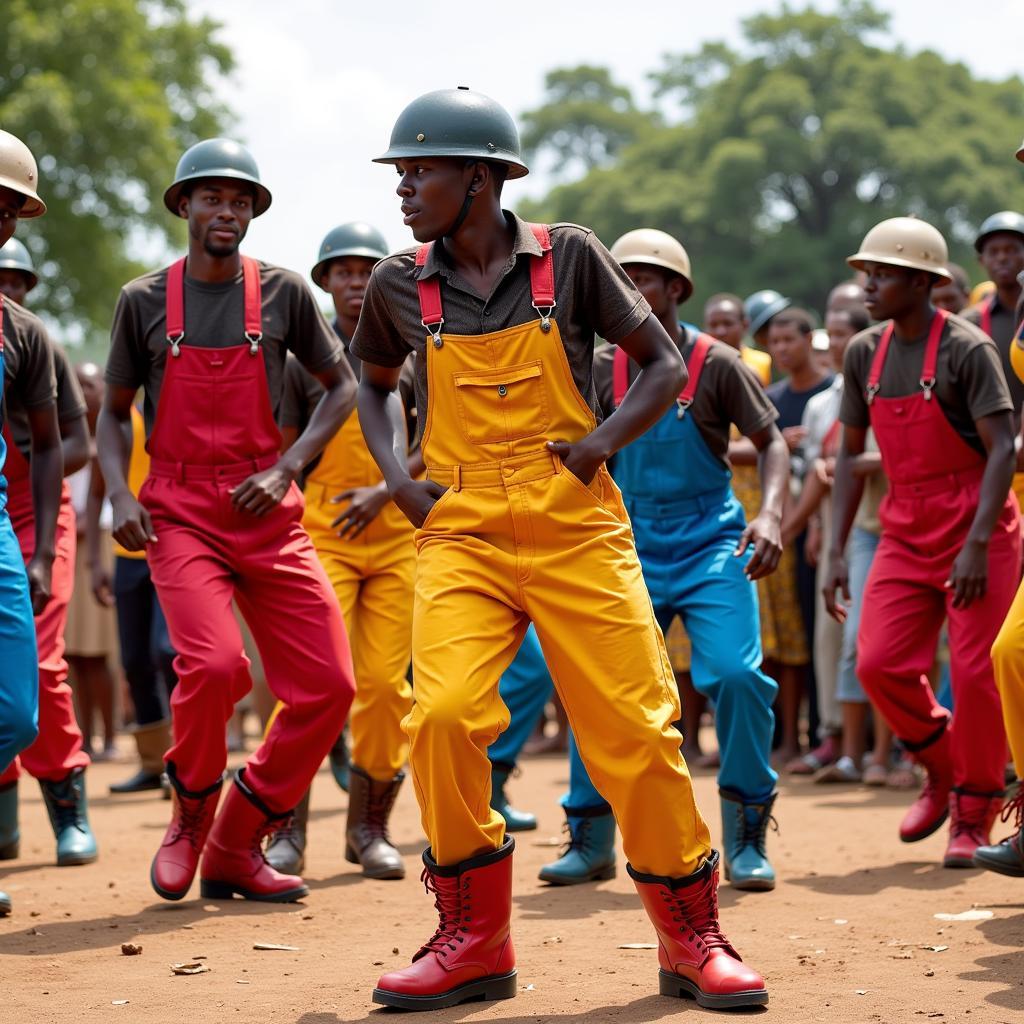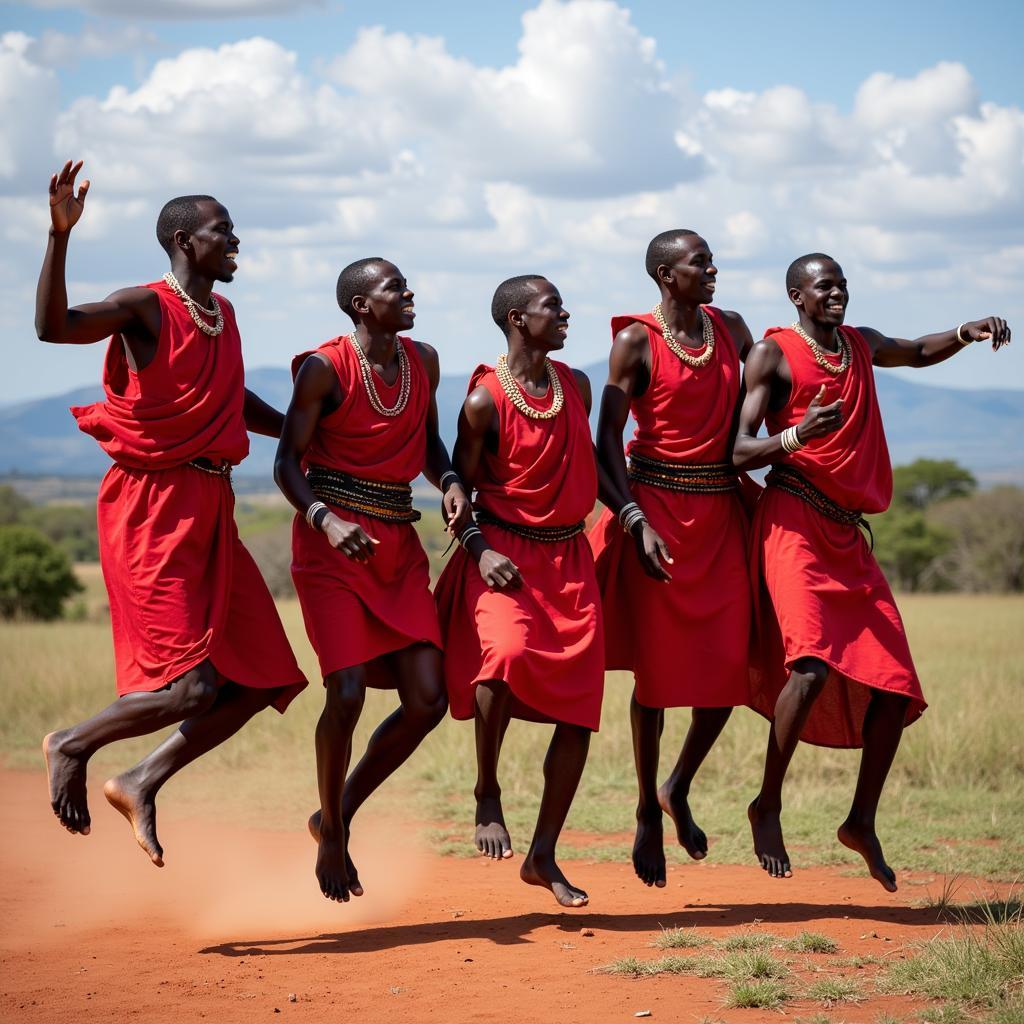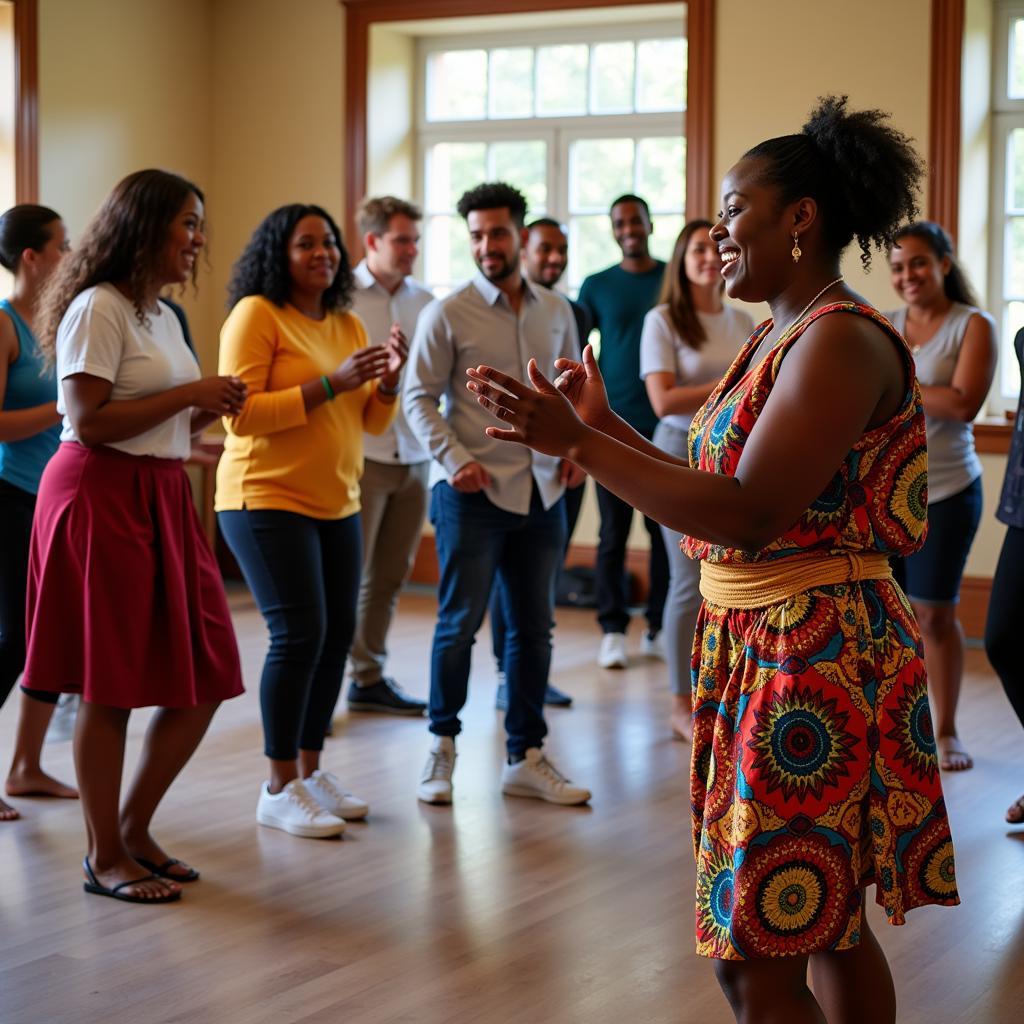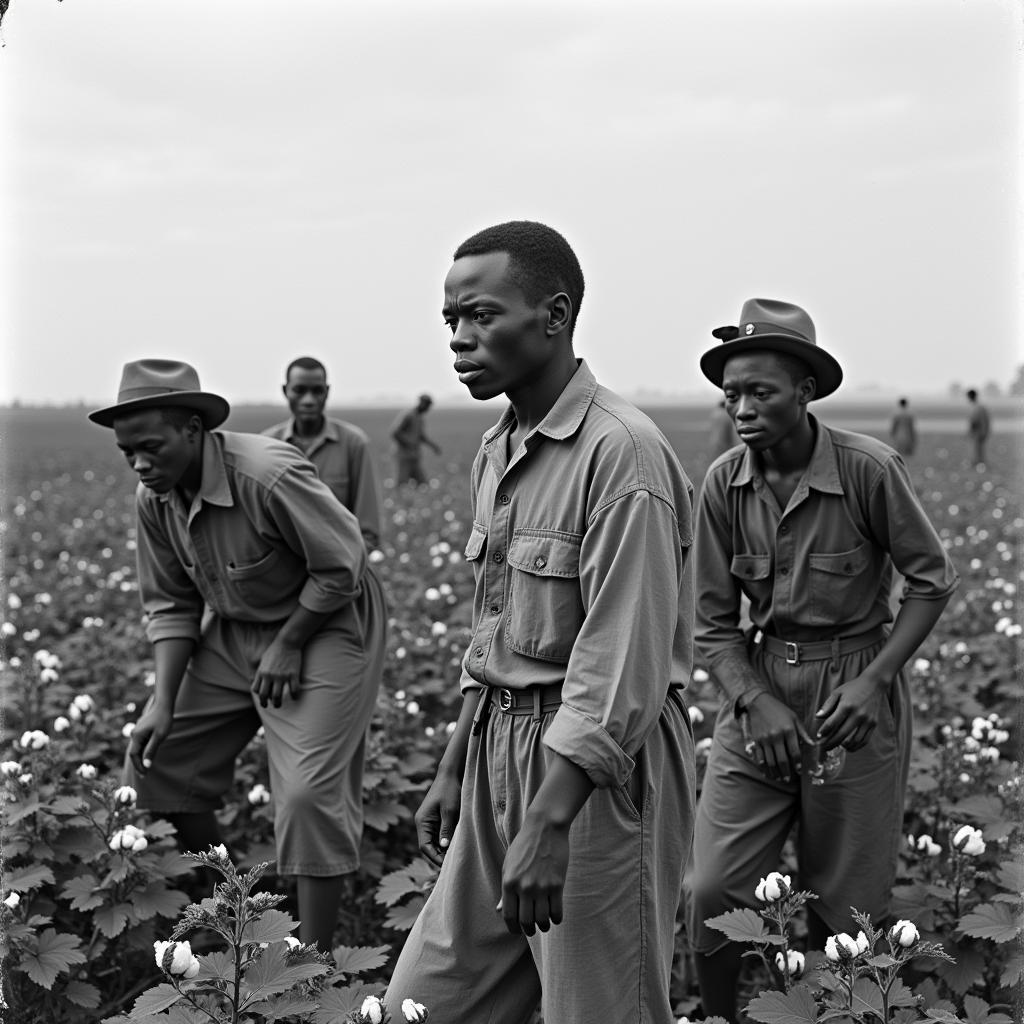Exploring the Rhythms of Life: The African Dance Routine
African Dance Routines are more than just sequences of steps; they are vibrant expressions of culture, history, and storytelling passed down through generations. From the energetic rhythms of West Africa to the graceful movements of East Africa, each region boasts unique styles that reflect the diverse tapestry of the continent. Let’s delve into the captivating world of African dance, exploring its various forms, significance, and the stories they tell. After reading this, you might even want to try some moves yourself!
The mesmerizing power of African dance stems from its deep connection to the community and the spiritual world. These routines are often performed during ceremonies, celebrations, and rituals, serving as a powerful medium for communication, healing, and social bonding. The rhythmic movements, often accompanied by drumming and singing, create a sense of unity and shared experience. Find captivating examples of African baby dancing gif. The infectious energy of African dance transcends language barriers, allowing people from all walks of life to connect with the heart and soul of African culture.
The Diversity of African Dance Routines
Across the vast expanse of Africa, dance styles vary significantly, reflecting the unique traditions and environmental influences of each region. West African dances, such as the energetic Azonto and the celebratory Gumboot dance, are characterized by their dynamic footwork and vibrant costumes. These routines often involve intricate polyrhythms, where multiple rhythms are played simultaneously, creating a complex and captivating soundscape.
In East Africa, dances like the Adumu of the Maasai people are known for their graceful leaps and synchronized movements. These dances often tell stories of bravery, courtship, and community life. Southern African dances, like the Indlamu, emphasize powerful stomping and rhythmic chanting, reflecting the strength and resilience of the people. The diversity of African dance showcases the continent’s rich cultural heritage and its ability to express a wide range of emotions and experiences through movement.
 West African Gumboot Dancers in Action
West African Gumboot Dancers in Action
Understanding the Significance of African Dance
African dance routines are deeply interwoven with the fabric of African society. They are not merely forms of entertainment but also powerful tools for communication, storytelling, and preserving cultural heritage. Many dances are associated with specific ceremonies, rituals, and social events, marking important milestones in life, such as births, marriages, and harvests. For instance, some dances are performed to invoke the spirits of ancestors, seeking their guidance and blessings. Others celebrate harvests, expressing gratitude for abundance and prosperity. Through these routines, communities reinforce their values, traditions, and sense of belonging.
 Maasai Warriors Performing the Adumu Dance
Maasai Warriors Performing the Adumu Dance
Learning an African Dance Routine: A Beginner’s Guide
Want to experience the joy and energy of African dance firsthand? There are numerous resources available for beginners, including online tutorials, dance classes, and cultural centers. Here are a few tips to get you started:
- Find a qualified instructor: Learning from an experienced instructor can provide valuable guidance on proper technique and cultural context.
- Start with the basics: Focus on mastering fundamental movements before attempting more complex routines.
- Listen to the rhythm: African dance is deeply connected to music. Pay close attention to the drums and other instruments to find the groove.
- Embrace the energy: Let loose and have fun! African dance is all about expressing yourself and connecting with the music.
Check out videos of African home made xns videos for some inspiration. Learning an African dance routine can be a rewarding experience that not only improves your physical fitness but also deepens your appreciation for African culture.
What are some common African dance styles?
Some common African dance styles include Azonto, Gumboot, Adumu, and Indlamu.
What is the cultural significance of African dance?
African dance plays a vital role in storytelling, preserving cultural heritage, and marking important life events and ceremonies.
Where can I learn African dance?
You can learn African dance through online tutorials, dance classes, and cultural centers.
 Beginners Learning African Dance Routines
Beginners Learning African Dance Routines
Conclusion
African dance routines are a testament to the richness and diversity of African culture. From the energetic rhythms of West Africa to the graceful movements of East Africa, these dances tell stories, preserve traditions, and connect communities. By exploring the world of African dance, we gain a deeper understanding of the continent’s vibrant heritage and the power of movement to express the human experience. Discover more about African garden cleaners. So, next time you hear the beat of African drums, let the rhythm move you and embark on a journey of cultural discovery through the captivating world of African dance.
FAQ
- What is the purpose of African dance? African dance serves various purposes, including storytelling, celebrating life events, and connecting with the spiritual world.
- What are the different types of African dance? African dance styles vary widely across regions, with each style having unique characteristics and significance.
- How can I learn African dance? You can learn African dance through classes, workshops, online tutorials, and by immersing yourself in African culture.
- What are the benefits of learning African dance? Learning African dance can improve fitness, coordination, and cultural awareness.
- What is the role of music in African dance? Music is integral to African dance, providing the rhythm and energy that drive the movements.
- Where can I find more information on African dance routines? Numerous resources, including books, websites, and cultural centers, offer information on African dance.
- What should I wear to an African dance class? Comfortable clothing that allows for free movement is recommended.
Situations and FAQs
Situation 1: A person is interested in learning more about their African heritage through dance.
- FAQ: What are some good resources for learning about the history and cultural context of specific African dances?
Situation 2: A traveler is planning a trip to Africa and wants to experience authentic African dance performances.
- FAQ: Where can I find information on local dance performances and festivals in different African countries? Check out insights on African American skin care tips while you are at it.
Situation 3: A school teacher wants to incorporate African dance into their curriculum.
- FAQ: What are some age-appropriate African dance activities and resources for children?
Further Questions and Resources:
- Explore the connection between African dance and spirituality.
- Discover the role of costumes and masks in African dance.
- Learn about the impact of African dance on contemporary dance forms.
- Find out about prominent African dance companies and choreographers.
- African comedy youtube ad
Need assistance? Contact us 24/7: Phone: +255768904061, Email: [email protected], or visit us at Mbarali DC Mawindi, Kangaga, Tanzania.


